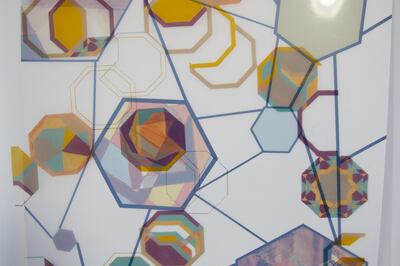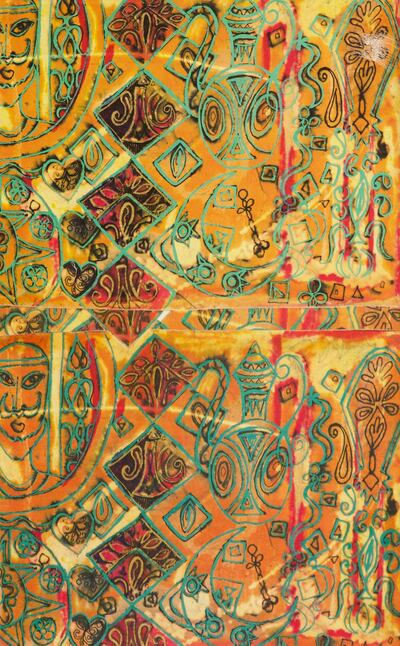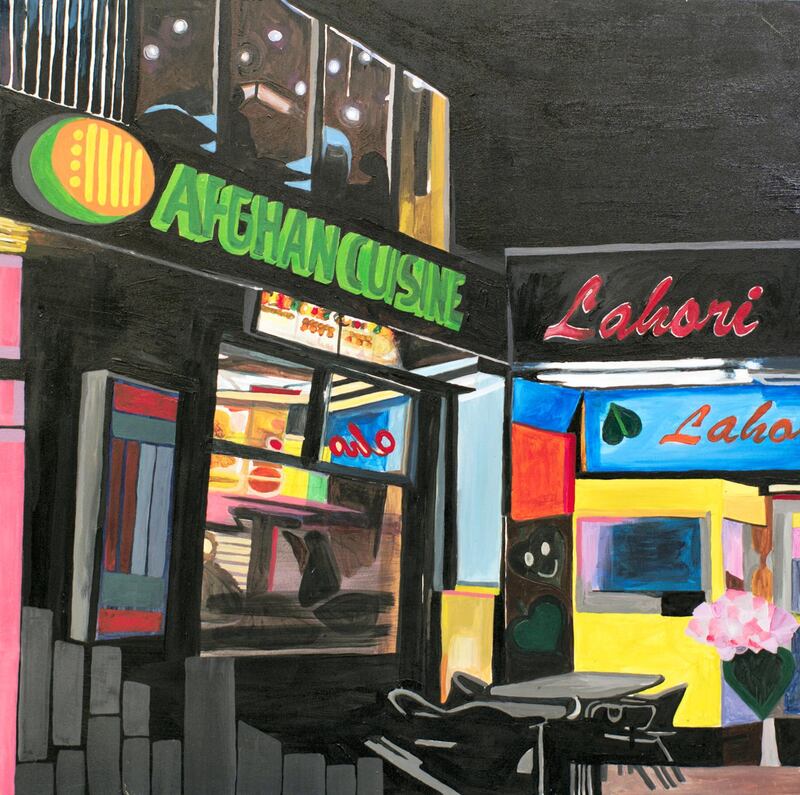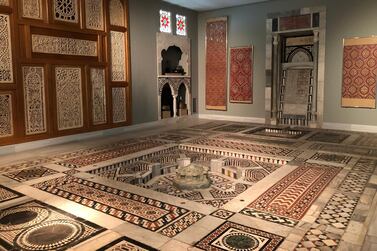Growing up in the UK in the 1960s and 1970s, Robina Akhter Ullah, 57, felt unique, a curio, even. "I was always the first," remembers the artist. "The only Muslim in high school, in college, getting a degree. I was always trying to prove I belonged, that it didn't matter that I was brown. I could fit in. But though I could change my voice," she says, in a distinctive Mancunian drawl, "I couldn't change my skin colour." She says it didn't matter where she was from, she was always subjected to racist remarks.
The epithet cuts through the gallery space in Manchester where Ullah is hanging her contribution to a fascinating group exhibition. But her reflections on identity and memory are a key part of Beyond Faith: Muslim Women Artists Today.
It's long overdue survey of five contemporary artists, who practise or have trained in the north-west of England; none are household names in the art world. But in a way that's the whole point of this exhibition – it's the result of an academic research project by the University of Manchester, which has posed important questions about how Muslim women are represented in the cultural and creative industries.
The journeys of the Muslim female artists
The answer is probably hidden in Ullah’s own experiences. She only got back into making art again relatively recently – her mother died and she started producing work for herself “to feel normal again”. It had been 25 years since she’d studied art, Ullah explains, as she takes me over to one of her strongest pieces of textile work. But something reignited in her.
"When Mum died, all my links with Pakistan went," she adds. "The stories disappeared. I was unmoored from that culture. So here, The Sun Never Sets On The British Empire looks at fractured memory; if you look at the fabric, there are threads hanging, and that's a reflection of how fragile our lives can be.

“You see how those pieces don’t connect?” she gesticulates. “Well, how will I reconnect to Pakistan? Now, I’m not sure that will ever happen.”
While Ullah is speaking, Shabana Baig takes photos of the exhibition space. Like Ullah, it feels like participating in Beyond Faith is an important moment for Baig – after her degree in textile design she freelanced for a while in the early 1990s before changing career to work in the voluntary sector. She currently has a role as a therapist for Greater Manchester Rape Crisis.
Finally, it seems, her colourful, detailed mixed-media work is getting the attention it deserves. “I was asked in the run-up to this show why I hadn’t pursued a career in the arts,” she says. “It’s not because I’m a Muslim but I do have to say that when I was a freelance designer, my parents didn’t want me to move to London where all the jobs were – they wanted me to get married.
“I didn’t, by the way, but I did find that it was difficult to follow that career path on my own. So I kind of just stopped.”
In fact, over the past couple of years, Baig's interests began to converge as she started to use art as a means of therapy and recovery for her clients. It wasn't long before she dug out work that had been "sitting under my bed for 28 years or more". She dusted it off, realised it was quite good – "very much about me as a second generation Asian woman dealing with a culture clash" – and started reworking some of the pieces.

“It was a really exciting moment, but even then I wasn’t in it for the glory of an exhibition; it was more to help my own well-being and the mental health of others. So I’ve now got myself a studio space and, you know what, I might start doing card designs. I’m going to dabble again, let’s put it like that, and see where it takes me. But I feel so much better already.”
Looking to inspire a new generation
Later, research assistant Jana Wendell will tell me that one of the aims of the project and exhibition is to make sure that Ullah and Baig’s experiences when they were young Muslim artists are not repeated, that there is encouragement, structure and a potential career path underpinning the talent and enthusiasm.
Not many start as young as Aida Foroutan, though, who as a four-year-old would soothe herself through blackouts and air-raids in Tehran by drawing. "It was my way of coping with my fears and conflicts, and I've never stopped that," she says of the series of paintings on show that look at the global oppression of women.
And just as the work dreams of a better world, so Foroutan hopes that there will be a moment in the not too distant future when exhibitions gathering together Muslim artists won’t be necessary. “I could ask why I should be pigeonholed as a Muslim artist? I’m just an artist, that’s it,” she says.
"But that's the way it is. I once spoke to a gallery in London about representing me, and their first question was to ask me where I was from. When I told them, they said they already had an Iranian artist – and this was without ever seeing my work. That's so wrong – and it doesn't happen to western artists."
In the meantime, then, in this imperfect world, Beyond Faith: Muslim Women Artists Today is hugely important, a chance to enjoy and explore thoughtful work that perhaps would never otherwise have seen the light of day – and also, through the artists' work with the Whitworth Gallery's existing collections, place it in interesting contexts.
“I hope it shatters a few myths and challenges peoples perceptions about being a Muslim woman,” says Robina Akhter Ullah. “That label doesn’t mean you all have the same experiences – the five of us here all have such different backgrounds – but what unites us is Islam.”
Beyond Faith: Muslim Women Artists Today is on show at The Whitworth, in Manchester in the UK, until November 10. For more information, visit www.whitworth.manchester.ac.uk






